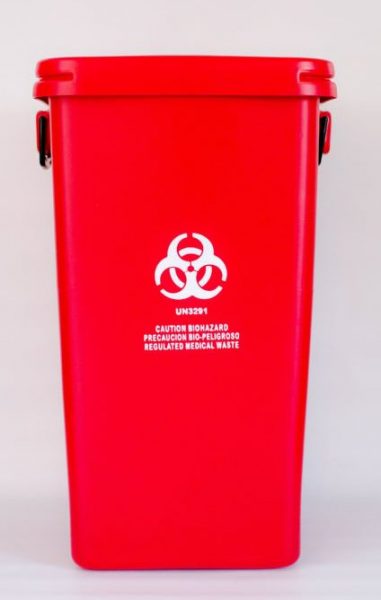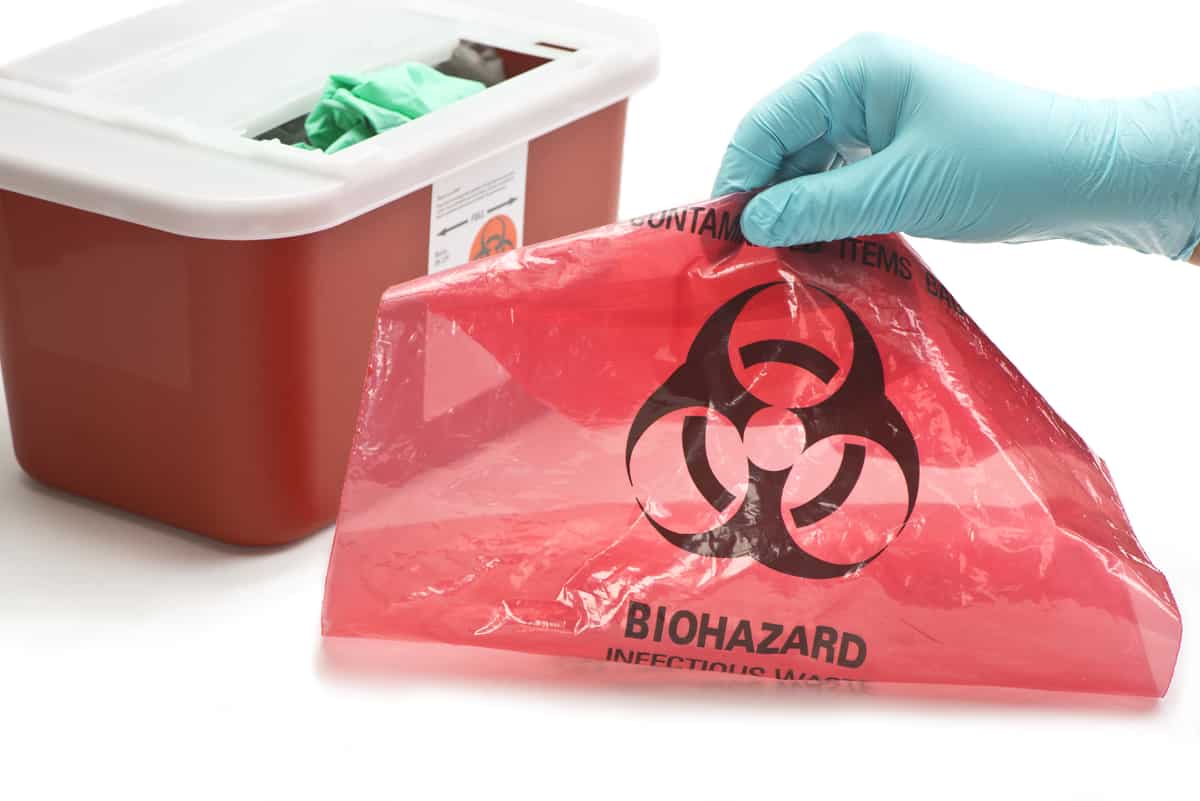Keep Ahead of Regulations: Specialist Suggestions on Medical Waste Disposal
In a world where the health care industry is constantly developing, it is necessary for medical centers to stay in advance of laws when it involves the appropriate disposal of clinical waste. With rigorous guidelines and constant governing changes, it can be testing to navigate the complexities of this process. Nonetheless, with professional advice, centers can ensure conformity and alleviate dangers connected with incorrect waste disposal. From recognizing the various categories of medical waste to implementing the best collection and partition techniques, this conversation will certainly supply valuable insights and actionable ideas to aid facilities stay in advance of laws in the ever-changing landscape of medical waste disposal.
Comprehending Clinical Waste Categories
Comprehending clinical waste groups is crucial for correct disposal and administration in health care facilities. Clinical waste describes any type of waste produced by healthcare activities that may present a threat to public health or the atmosphere. It is important to classify medical waste precisely to ensure its secure handling, transport, therapy, and disposal.
There are a number of classifications of medical waste that healthcare facilities require to be acquainted with. One of the most typical categories consist of infectious waste, pathological waste, sharps waste, pharmaceutical waste, and chemical waste. Each group has specific standards and policies for its appropriate monitoring and disposal.
Pathological waste refers to human cells, organs, or body parts that call for unique handling and disposal. Drug waste makes up ended, unused, or contaminated medicines that require cautious handling and disposal.
Staying Up-To-Date With Regulatory Modifications
Staying current with regulatory adjustments is essential for healthcare centers to guarantee compliance and correct monitoring of clinical garbage disposal. medical waste removal services. With policies continuously developing, it is vital for health care facilities to remain current to stay clear of fines, penalties, and prospective harm to the environment and public wellness
To stay in advance of regulative changes, medical care facilities should develop a system for monitoring and monitoring updates. This can be done by signing up for regulatory e-newsletters, attending meetings and workshops, and proactively getting involved in industry organizations. Furthermore, centers must designate a personnel or group accountable for remaining notified and sharing information to pertinent stakeholders.
Regular interaction with regulatory companies is additionally essential. Healthcare facilities need to establish relationships with regional, state, and federal companies to ensure they are mindful of any type of modifications in laws that may influence their waste administration methods. This can be done with routine conferences, engagement in public comment durations, and proactive involvement with governing companies.
Additionally, healthcare centers ought to consider partnering with waste monitoring business that specialize in clinical waste disposal (medical waste disposal services with WasteX). These business are often skilled in the most up to date regulations and can offer support and support to guarantee compliance
Carrying Out Correct Collection and Partition Approaches
To effectively manage medical waste disposal, health care facilities should develop appropriate collection and segregation techniques according to regulative guidelines. Executing these techniques guarantees the safe handling and disposal of potentially hazardous materials, protects the setting, and minimizes the risk of infections and injuries to healthcare employees and the public.
Correct collection and partition techniques include using assigned containers and identifying systems. Health care facilities ought to provide clearly labeled containers for different kinds of medical waste, such as sharps, transmittable waste, pharmaceutical waste, and non-hazardous waste. These containers need to be color-coded and clearly marked to stay clear of confusion and promote simple identification.
Furthermore, healthcare centers ought to educate their team on the proper procedures for collecting and setting apart clinical waste. This consists of educating them on the various kinds of waste, the appropriate containers to make use of, you could try this out and the relevance of complying with guidelines and guidelines. Routine training sessions and correspondence course ought to be performed to make sure that employee stay up-to-date click here for more info on ideal practices.
Furthermore, medical care facilities should develop a system for routine collection and disposal of medical waste. This might include partnering with licensed waste monitoring business that specialize in clinical waste disposal. These companies will certainly make sure that the collected waste is delivered and gotten rid of in compliance with governing demands.
Choosing the Right Disposal Approaches

Incineration is just one of the most efficient and usual approaches for getting rid of particular sorts of clinical waste, such as pathological waste and sharps. It involves the controlled burning of waste at heats, decreasing it to ash. Nevertheless, incineration can launch harmful pollutants right into the air and add to air contamination.

Chemical treatment includes the usage of chemicals to decontaminate and neutralize the waste. Microwave therapy uses microwave energy to warmth and disinfect the waste.
Guaranteeing Conformity With Documents and Training
After thoroughly thinking about the appropriate disposal techniques for clinical waste, medical care facilities have to ensure compliance with guidelines and reduce environmental impact by carrying out reliable documents and training treatments. This step is important in preserving a lasting and secure atmosphere for both health care workers and the public.

Medical care workers that take care of clinical waste must get appropriate training on waste segregation, managing, and disposal treatments. By giving detailed training, health care facilities can encourage their staff to make educated decisions and reduce the danger of improper waste disposal.
Conclusion
Finally, remaining ahead of guidelines in clinical waste disposal is crucial for medical care centers. medical waste removal. Recognizing the various classifications of clinical waste, remaining updated with regulatory adjustments, executing appropriate collection and partition methods, selecting the appropriate disposal techniques, and making sure compliance via documents and training are all crucial actions. By complying with these guidelines, health care companies can effectively take care of and dispose of clinical waste in a responsible and risk-free fashion
From comprehending the different groups of clinical waste to applying the best collection and segregation methods, this discussion will certainly give useful insights and actionable tips to help facilities stay ahead of regulations in the ever-changing landscape of clinical waste disposal. - medical waste disposal services with WasteX
The most typical classifications include contagious waste, pathological waste, sharps waste, pharmaceutical waste, and chemical waste. Medical care centers must offer clearly identified containers for various kinds of medical waste, such as sharps, infectious waste, pharmaceutical waste, and non-hazardous waste. Medical care facilities ought to develop a thorough system to tape and track all facets of clinical waste disposal, consisting of types of waste created, quantities, and disposal approaches made use of. Health care workers who take care of medical waste should get suitable training on waste segregation, taking care of, and disposal treatments.